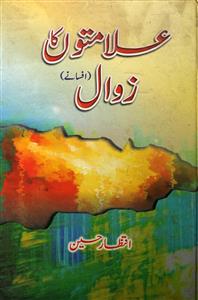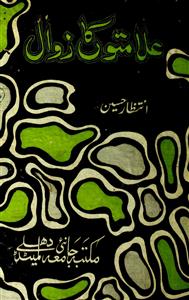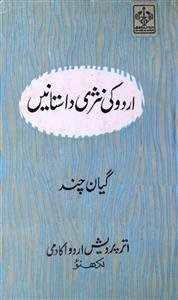 For any query/comment related to this ebook, please contact us at haidar.ali@rekhta.org
For any query/comment related to this ebook, please contact us at haidar.ali@rekhta.org
About The Book
انتظار حسین کا شمار ارد کے اہم افسانہ نگاروں میں ہوتا ہے ان کے ناول اور افسانے ادب کی بلندی پر فائز ہیں ۔ ان کا کمال یہ تھا کہ وہ علامتی اور استعاراتی اسلوب کو نت نئے ڈھنگ سے بالکل اچھوتے انداز میں استعمال کرنے والے فن کار تھے ۔ان کا فن عوامی نہیں ہے بلکہ عام قاری کی فہم و بصارت سے کوسوں دور نظر آتا ہے ۔ ان کی تخلیق کا مطالعہ کر نے کے لیے وسیع مطالعہ ضروری ہے ۔ان کی کہانیوں میں چار طرح کے رنگ نظرآتے ہیں اول معاشر ہ کی عکاسی ، دوم رومانویت واخلاقیت کی منظر کشی اس میں وہ اخلاق ورومان کے زوال کے قصے بیان کرتے ہیں ۔سوم سیاسی اورسماجی اور چہارم نفسیاتی رنگ ہے ۔ ان کے علاوہ ہندودیومالائی اور بودھ جاتک کتھاؤں کابھی رنگ ان کے افسانوں میں جابجا نظرآتا ہے ۔ ’’ آخری آدمی ‘‘ ان کامشہور افسانہ اور افسانوی مجموعہ بھی ہے ۔اس میں کل بارہ افسانے ہیں۔ سجاد باقر رضوی اس افسانوی مجموعہ کے دیباچہ میں لکھتے ہیں، ’’انتظار حسین کے افسانوں میں فرد کا وجود پورے قومی وجودکا ایک حصہ ہے ۔ اسی سبب سے ان کے اسلوب میں بھی علامتی طریق کار یا تلازمہ خیال پورے معاشرے کی علامتوں اور تہذیبی شعور کو بروئے کار لاتا ہے۔‘‘ الغرض ان کے افسانوں نے اردو افسانہ نگاری میں ایک نئی شناخت قائم کی ہے اور عالمی طور پر بھی وہ اپنی افسانہ نگاری کی وجہ سے ہی مشہور و معروف ہوئے اور ’’بُکر‘‘ پر ائز کی فہرست میں بھی شامل ہوئے۔
About The Author
Intizar Hussain was born on December 21, 1925 in Bulandshahr, Dibai. He did BA and MA in Urdu from Meerut College. After the formation of Pakistan, he settled in Lahore, where he became associated with the field of journalism.
Intizar Hussain’s first collection of short stories ‘Gali Kuuche’ was published in 1952. The Lahore Nama, a long-running column in the daily Mashriq, also became very popular. He also wrote columns for radio. In Urdu, he went on to attain a truly distinguished stature in fiction and novel writing.
Besides being a noted fictionist of the Urdu language, he is still considered an exemplar by frontline writers owing to his unique style, tone of narration, and crafting. He assimilated the finer elements of the classic Urdu Dastan, its characterization, and intonation into the contemporary settings. His writings have a nostalgic air about them, mainly because he often brings together mythological tropes in his writings. There is a profound sense of classicism and traditionalism in his works. The superficialness of new values in contrast with the atrophy of traditional ones is something that brings a melancholy expression out of him. He innovatively uses symbols and metaphors. In spite of the love for past and an attempt to steer clear of the future, there is an unheralded beauty and pain in his stories.
His noted works include: Aakhri Aadmi, Shahr-e-Afsos, Age Samandar Hai, Bastii, Chaand-Gahan, Gali Kooche, Kachhue, Khaali Pinjra, Khaame Se Duur, Din Aur Daastaan, Alamaton Ka Zawaal, Boond Boond, Shahr-zad Ke Naam, Zameen Aur Fallak, Charaghoon Ka Dhuwan, Dilli Tha Jis Ka Naam, Justujuu Kya Hai, Qatre Mein Darya, Janam Kahaniyan, Qissay Kahaniyan, Shakista Sutoon Par Dhoop, and Saeed Ki Pur Asraar Zindagi.
Intizar Hussain was the first Pakistani writer to be shortlisted for the Man Booker Prize. He was also awarded Sitara-e-Imtiaz by the Government of Pakistan and the Kamal-e-Fann Award, the highest literary award of Pakistan by the Academy of Literature of Pakistan.
This article is written by Aqeel Abbas Jafari who is a well-known writer.
 For any query/comment related to this ebook, please contact us at haidar.ali@rekhta.org
For any query/comment related to this ebook, please contact us at haidar.ali@rekhta.org





















